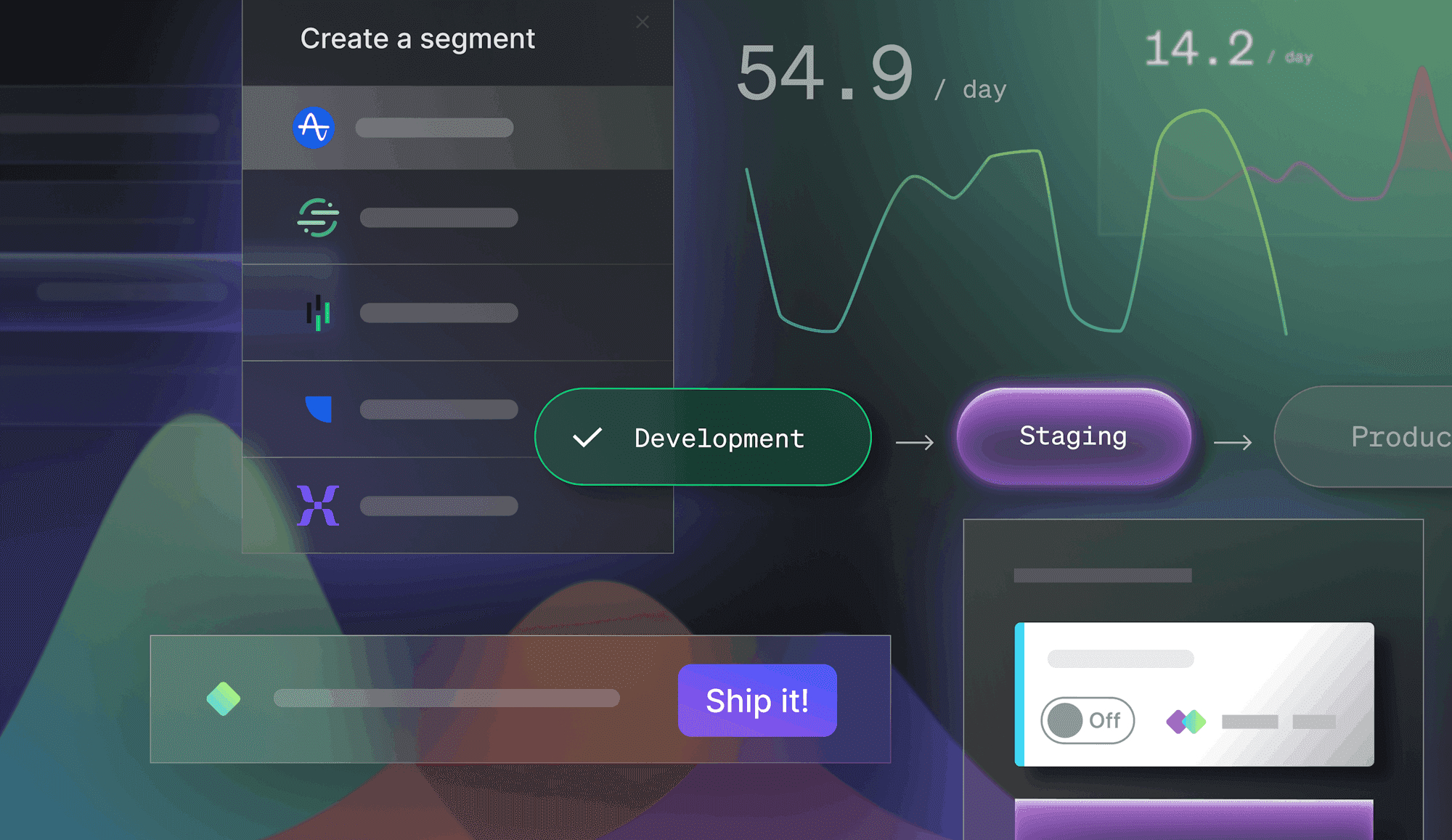Key Takeaways
- Versioning enables modular software delivery, speeding up innovation while reducing the risk of major disruptions.
- Versioning allows teams to work on different project segments simultaneously, optimizing resources and facilitating quick rollbacks for service reliability.
- Clear versioning schemes, documentation, and automation enhance communication and adaptability to industry standards.
What is software release versioning?
Software release versioning is the act of bundling or managing multiple product releases under one giant umbrella. Where developers once released monolithic apps and projects, now with release versioning, we lean into a more modular form of software delivery. This modular approach brings many benefits, including accelerating the rate at which developers innovate and ship new things.
Software release versioning is a critical aspect of software engineering and product management. It serves as a bridge between the technical and business sides of product development. It provides a structured approach to releasing, tracking, and managing software product versions.
Let's explore why software release versioning is essential from an engineering perspective and a larger product and organizational perspective.
Why is versioning important?
As the Silicon Valley adage goes, “Move fast and break things.” There’s undeniable power in moving fast. However, the second part is significantly less powerful. Breaking stuff has severe consequences.
Software versioning allows you the speed and power of constant iterations but reduces the likelihood of breaking stuff and severe drastic impacts.
Unlike traditional releases, in which developers ship extensive updates simultaneously, this more modular, agile release version allows organizations to iterate and find bugs quickly. Let’s explore why software release versioning can be so robust for your organization.
Track changes and bugs
Versioning allows for precise tracking of code modifications, enabling teams to identify the introduction of bugs or changes. By releasing incremental updates, pinpointing issues becomes more manageable, enhancing the debugging process and maintaining code integrity.
Facilitate collaboration in the deployment process
Many hands make light work, and many developers can divide and conquer different parts of the software product coming to life. Versioning facilitates a collaborative environment where developers can simultaneously work on various project segments. This approach optimizes resource utilization and accelerates the development process by distributing tasks effectively across the team.
Enable rollbacks
The ability to quickly revert to a previous version in case of a release issue is invaluable. Rollbacks minimize user impact and downtime, ensuring service continuity and reliability. This safety mechanism is essential for maintaining user trust and service quality.
It’s worth noting that, in many cases, a better alternative to rolling back your entire application is to disable the bug-causing feature with a feature flag (i.e., hit a kill switch).
Enhance communication and transparency
Clear communication about releases, features, and changes is essential for stakeholder engagement and alignment. Versioning promotes transparency, providing stakeholders a comprehensive understanding of development progress and decision-making processes.
How release versioning works
In the world of coding today, we're all about breaking things down into neat, manageable updates—think of it as giving your app a series of mini makeovers instead of one massive overhaul. Thanks to the magic of versioning (hello, Semantic Versioning!), every update is neatly categorized into significant changes, incredible new features, or just fixing the odd bug here and there. This setup, powered by tools like Git and automated workflows, makes life much easier for everyone involved, allowing teams to roll out new stuff quickly and keep everyone in the loop.
Gone are the days of the old-school "waterfall" method, where updates were big, bulky, and a bit of a surprise party for users (and not always the fun kind). Today, it's all about being nimble and responsive, ensuring software can keep up with the fast-paced and ever-changing demands of our digital world. It's a smoother ride for developers and a better deal for users, ensuring everyone's on the same page and happy with where things are headed.
Versioning systems and software version numbering
In the realm of software development, two popular versioning systems stand out: Semantic Versioning (SemVer) and Date-Based Versioning. While SemVer organizes versions into a structured format of major, minor, and patch updates to reflect the scope and nature of changes, Date-Based Versioning uses the calendar date or release date as a straightforward indicator of the software's latest iteration, providing a clear timeline of updates.
Semantic Versioning
Semantic Versioning, or SemVer, is like a finely tuned roadmap for developers and users alike, laying out the journey of a software product through numbers. The version number, broken down into major, minor, and patch segments (e.g., 2.3.1), tells a story. A major update (2.0.0) signals significant, possibly compatibility-breaking changes, a minor update (0.1.0) introduces new features that play nicely with the existing setup, and a patch (0.0.1) smooths out the bumps, fixing bugs without stirring the pot. It's a system that values precision and preparation, helping everyone brace for impact or look forward to enhancements.
Date-Based Versioning
On the other hand, Date-Based Versioning, or CalVer takes a more chronological approach, marking versions with the release date in various formats, like YYYY.MM.DD (e.g., 2024.03.20). It's akin to flipping through a diary, where each entry is a snapshot of the software on a specific day. This method is simple and transparent, offering an intuitive sense of a version's recency and development pace. It's especially favored in environments where frequent, incremental updates are the norm, providing a clear, linear progression of the software's evolution.
Essential release versioning best practices
Navigating the intricate world of software releases demands a solid framework of best practices to ensure clarity, efficiency, and reliability. Here are some best practices to help you implement the best software release versioning practices within your organization.
Choose a clear and consistent versioning scheme
Adopting a straightforward and consistent versioning scheme, like Semantic Versioning or Date-Based Versioning, sets the stage for predictable and understandable releases. This clarity helps developers and users anticipate each update's impact.
Use version control systems
Leveraging version control systems such as Git (open-source) or GitHub (paid service) is non-negotiable for managing changes and collaborating smoothly. These tools provide a historical record of modifications, facilitating rollback and auditing processes.
Document your versioning policy
Clear documentation of your versioning policy is crucial. It outlines the rationale behind version numbers and ensures all team members are aligned, reducing misunderstandings and inconsistencies.
Automate versioning wherever possible
Automation of the versioning process minimizes human error and streamlines releases. Utilize CI/CD pipelines to integrate versioning into your development workflow, enhancing efficiency and reliability.
Communicate effectively about releases
Transparent communication with stakeholders about what each release entails promotes trust and manages expectations. Clear release notes and change logs are invaluable tools in this regard.
Use versioning for configuration management
Applying versioning principles to configuration management helps track the evolution of system settings and infrastructure, which is crucial for maintaining consistency and troubleshooting in complex environments.
Regularly review and update your versioning practices
The tech landscape is ever-evolving, and so should your versioning practices. Regular reviews ensure your methods stay relevant, effective, and in tune with the latest industry standards and needs.
Leverage feature flags for controlled rollouts
Incorporating feature flags into your release strategy offers a dynamic layer of control over how new features are rolled out and tested. Feature flagging and software release versioning are complementary practices in modern development. Platforms such as LaunchDarkly facilitate the management of these feature flags, enabling you to decouple feature releases from your main versioning system.
For example, you can turn ‘off’ a buggy feature in LaunchDarkly without having to update your release version. Or you can turn ‘on’ a feature for a specific audience segment without needing to make a release version update. The cumulative benefit of this approach is it allows you to change the behavior of your application without generating an excess of release versions.
How LaunchDarkly complements versioning
Wrapping things up, let's spotlight LaunchDarkly, the sidekick every versioning superhero needs. Imagine having the power to sneak new features into the software universe without causing a ripple, testing the waters, and gathering intel—all while keeping the peace in the main versioning storyline. That's LaunchDarkly in a nutshell, with its slick feature management cape and goggles. It's like having a backstage pass to tweak, test, and tease out features, ensuring they're ready for the big stage.
By adding LaunchDarkly feature flags to your toolkit, you're not just sticking to the script of versioning; you're improvising with style, ensuring every feature hits its mark with the audience. If you’re enthralled with the idea of rolling out features with the confidence of a seasoned stage director, why not take LaunchDarkly out for a spin?











.png?ixlib=gatsbyFP&auto=compress%2Cformat&fit=max&rect=0%2C0%2C5998%2C3471&w=3000&h=1734)






.png)



